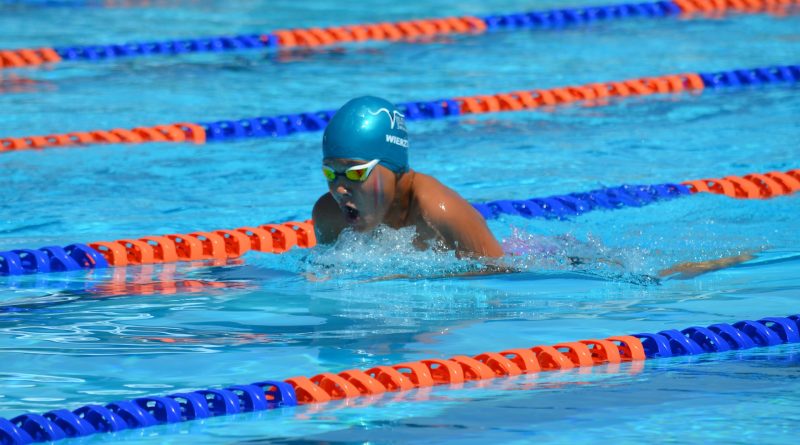Swimming: co-ordinated breathing – breaststroke
In the breaststroke, exhalation takes place as you release into the glide. Extending the arms forward exerts pressure on the diaphragm, naturally encouraging the expulsion of air from the lungs. Similarly, raising the body up and bringing the arms around encourages the opening up of the chest and lungs, thus promoting an unforced inhalation. Assuming that sufficient air has been expelled during the glide, air will flow into the lungs without extra effort.
Standing up, bring your arms up to shoulder height and open them wide to either side. Think of the movement as starting from the back and shoulders and then traveling into the arms and hands. Notice how, as your arms open, there is a natural inclination to inhale. Now close your arms, bringing your hands together, and notice how it feels more comfortable to exhale as you do so.
Due to the pressure of water (hydrostatic pressure), breathing out into water requires slightly more force and takes longer than exhalation into the air. A leisurely glide in the breaststroke should allow enough time to release sufficient air from the lungs for a comfortable inhalation to take place in turn. It’s a common error to suppose that one needs to fill one’s lungs to capacity with each inhalation or to breathe out every last drop of air. This is a recipe for anxiety and tension.
The length of time you choose to take in the glide will indicate the speed at which the breath needs to be exhaled. A faster rhythm of the stroke will require a shorter, more forceful exhalation. So when we accelerate our arm movements for the sake of speed, thereby encouraging repeated inhalation with every pull, problems arise because there’s not enough time to exhale sufficiently in the short periods when the arms are in the forward position. The repeated pulling back of the arms without sufficient intermediate pause can create a tendency to hyperventilate, which is a common reason for breathlessness and discomfort in breaststroke.
Discover your optimum rhythms by trying out glides for different lengths of time. You can set a rhythm for yourself in advance by counting, say, to a slow beat of four. Think ‘glide’ to the count of three, and ‘up’ on the fourth. Explore this first on land and then standing in shallow water: as you extend your hands forward, bow your head and shoulders and exhale into the water. Exhale counting three beats while your hands stay together ahead of you, and come up to breathe on the fourth count.
A common fault is to leave the head in the water too long before pulling it back hastily to snatch a breath. It is much more comfortable to allow the head to rise as an integrated part of the torso when your arms open and drawback. The pace of rhythm needs to be adapted depending on how fast you swim. Ultimately, the exact rhythm of breathing will depend on all sorts of factors: your weight, height, speed, orientation, or just the way you choose to swim at the time.


